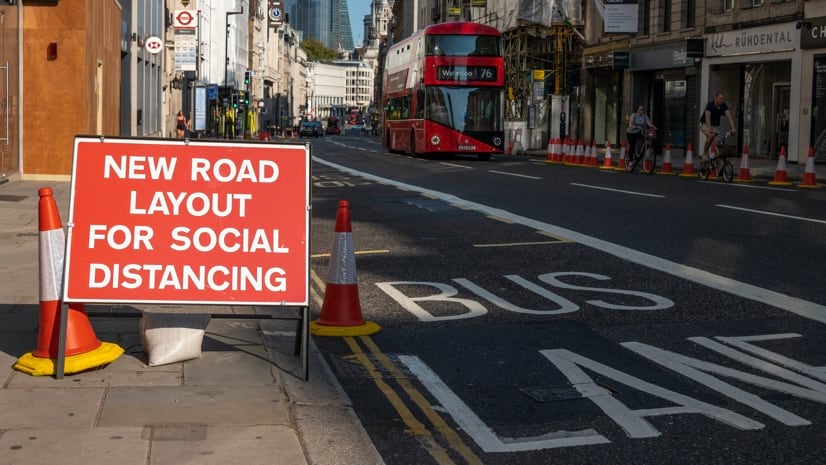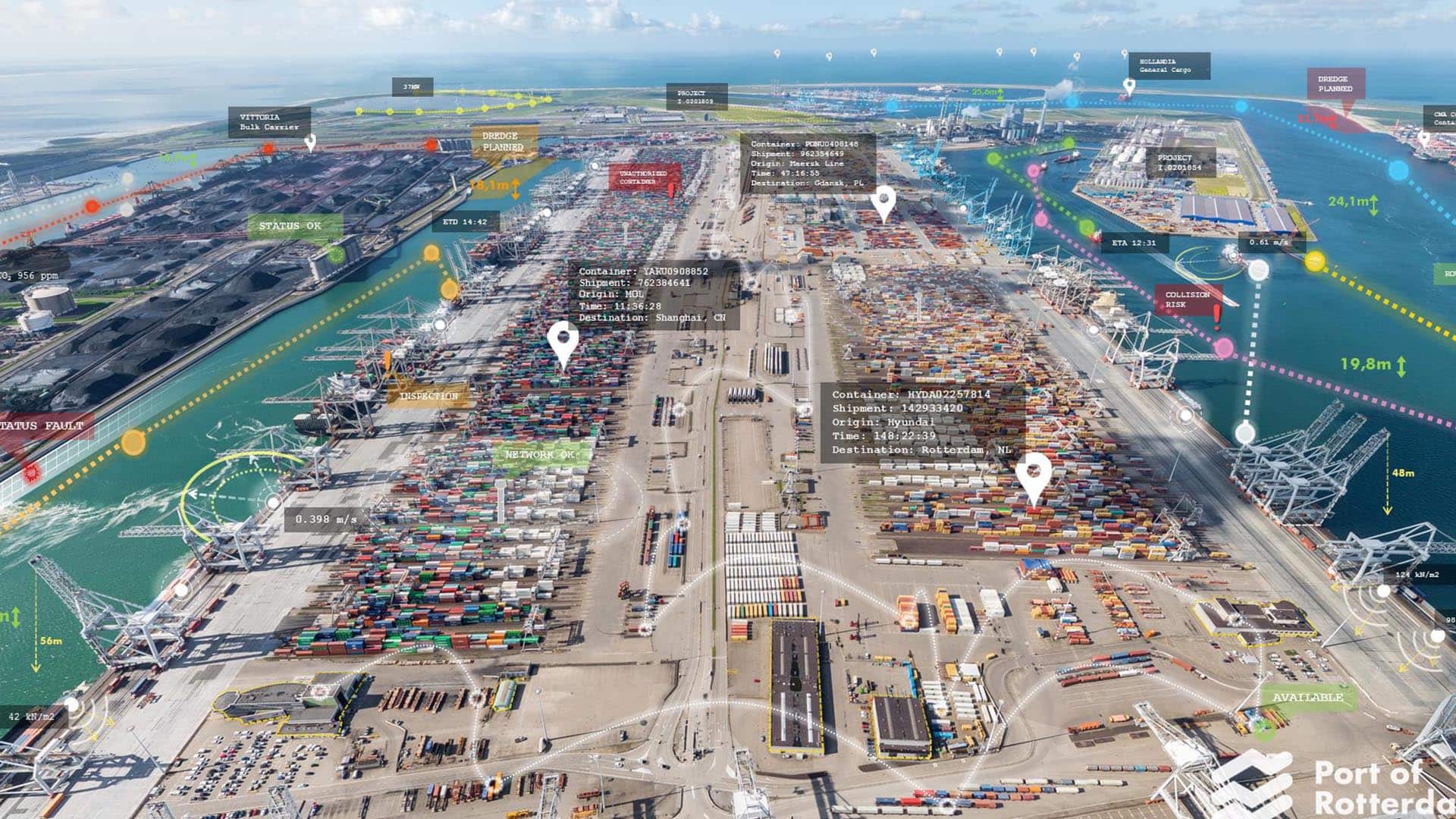

March 23, 2021

Twice in the last decade Londoners have seen dramatic shifts in the way they interact with streets and transit. The first was in 2012 when the Olympic Games temporarily brought 600,000 new riders to London’s buses and trains. The second was in 2020 when the COVID-19 pandemic emptied streets, buses, and rail cars. In both instances, planners at Transport for London (TfL) looked for near real-time understanding of traffic patterns, demand, and incidents using situational awareness from a geographic information system (GIS).
In response to the pandemic, TfL had to reconsider how mobility can enhance public safety. During the Olympics, it had to move people around to many venues, while maintaining mobility for residents and businesses. New technologies implemented in 2012 would prove valuable once again in 2020.
Olympics preparation included standing up the Games Playbook, a comprehensive traffic management tool that served as a central source to visualize mobility. Reflecting on lessons from the games, Michelle Dix, director of planning for TfL at the time, told the BBC: “That’s the biggest legacy in terms of behavioral change. We proved that through messaging and communications and telling people what’s going on, telling them about alternatives so they can make informed choices, we proved that you can manage these big events.”
GIS technology has given TfL a chance to understand how street space can be reimagined for London’s residents—whether the challenge is to use the space efficiently for more people or use it safely for fewer.
The Olympics effort was deemed a success, with 90 percent of journeys completed on time despite a record number of riders. The London Tube alone had 4.5 million riders on one day of the games compared to the typical 3 million, and 30 percent more than usual over the course of the event.
In addition to catalyzing the use of powerful traffic awareness technology, the Olympics kicked off a series of citywide initiatives to make healthy, sustainable travel options more accessible. Boris Johnson, then-mayor of London, pledged to maintain key elements of the walking, cycling, and public transit infrastructure created to support the games.
Now, public health is a top priority of Mayor Sadiq Khan’s 2018 Transport Strategy with the goal of 80 percent of trips around the city to be taken via public transit, on foot, or by bicycle by 2041.
TfL’s GIS services have been instrumental in these efforts.
“After the Olympics, the need for geospatial understanding still remained very much at the forefront,” said Jaymie Croucher, TfL’s GIS lead for Network Management, Surface Transport.
TfL invested in its GIS in 2014, delivering GIS as a service, and creating the Surface Playbook. “We’re six years in to a 10-year plan, and we continue to grow to support internal and external stakeholders—all fed through the single source of truth for data,” Croucher said.
Since the emergence of COVID-19 in early 2020, TfL has faced a new challenge in support of social distancing and implementing London’s goals for active, sustainable transportation.
Using maps of city streets created in the Surface Playbook, TfL used funding from the Government’s Active Travel Fund to make more space for people to walk and cycle safely during the pandemic. The program’s intention is, “to support the members of the public to have more confidence to walk and cycle,” Croucher said. “It’s focused on supporting sustainable modes and increasing the ability to enact social distancing in transit, whilst limiting the impact of other modes.”
The program encompasses several connected projects, including widening walkways, creating temporary bicycle lanes, and restricting car traffic near schools and in designated low traffic neighborhoods. Projects have been implemented citywide on the 360 miles of roads managed by TfL as well as locally through funding provided to London’s boroughs.
As all the projects took shape, Surface Playbook was utilized as the focal point to giving clear situational awareness across the business as schemes were proposed, planned and delivered. “There’s a limited amount of space in London, and our team had to act quickly and use it wisely,” Croucher said. “We needed to look at social distancing and find out where it was going to be the biggest issue.”
The team’s principal data manager and GIS specialists (Christophe Delatreche, Timothy Fegan and Christina Kimbrough) along with the data scientists of Operational Analysis, created products identifying at-risk and high-demand areas of pavement to give planners a clear indication of priority areas. In particular, the maps highlighted five factors: areas with current high demand for cyclists and pedestrians; essential services like grocery stores; population density; median household income (low income typically correlates to higher foot traffic); and high-traffic public transportation hubs. As a whole, the maps conveyed a clear picture of where streets were likely to be crowded—and where more space was needed most for safe and socially distant activity.
The resultant risk assessments could then be layered over data like walkway widths to create priority scores. Top priority was given to streets and neighborhoods with both the need and capacity for wider walkways. “This enabled the business to have a clear understanding of precedence enabling clearer decision making prior to accepting schemes.” Croucher said.
Similar processes informed additional schemes like added space for social distancing at heavily trafficked bus stops and establishing 24/7 bus lanes on priority routes.
TfL also coordinated with the GIS team within City Planning, led by Vicki Gilham, to expedite existing plans for cycle lanes created under London’s broader transport strategy. Prior to the pandemic, Croucher said, “Where previously we had seen cycling programs paused pre-pandemic, we’re now seeing those accelerated in areas where there’s an increased need for cycling infrastructure.”
While the efforts align with London’s long-term goals, many schemes introduced during the pandemic are currently considered temporary. TfL is working to report on the success of each scheme to gauge whether the changes will make sense for the city after the pandemic—much like the process for maintaining Olympics infrastructure following the games.
“Before we can decide whether a feature becomes permanent or not, we need to understand what the impact is,” Croucher said. “If you close a street, for example, that is going to cause traffic to develop elsewhere. The schemes need to be well monitored to ensure that they’re effective in the long run for all modes of transport.”
Onsite surveys have been a key component of the monitoring process. Surveyors in the field across the Greater London area capture data about use, safety, and needed improvements. Survey feedback populates a live, online GIS dashboard, providing real-time visibility for city management and informing next steps.
To that end, such shareable reporting tools have supported TfL during the pandemic. With many schemes also being carried out by boroughs, the team created a GIS database to centralize program information.
“Compiling it all within a single portal, we’ve allowed everyone to have transparency over the safety of each scheme and compliance of users,” Croucher said. The portal delivers situational awareness for TfL and city leadership to see how each scheme performs and interacts.
Changing a city’s transportation habits ultimately requires a strategic rebalancing of the way residents use city streets. Recreation, public transit, transportation of people and goods—each claims a space on city streets. Giving more space to one will necessarily take space from another.
Maps provide a powerful visual understanding of the space available and a strong platform to plan, prioritize, and improve.
“The benefits of the way we collect and disseminate this information are reaped well beyond TfL to provide clarity to both external partners and ultimately the public,” Croucher said. “Understanding the spatial relationships that elements have provides a clear picture for decision makers that you won’t necessarily see by looking through more traditional means such as a database or a spreadsheet.”
Learn more about how GIS is used to make transportation more efficient.


